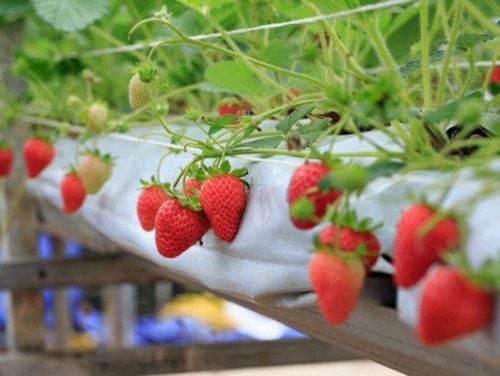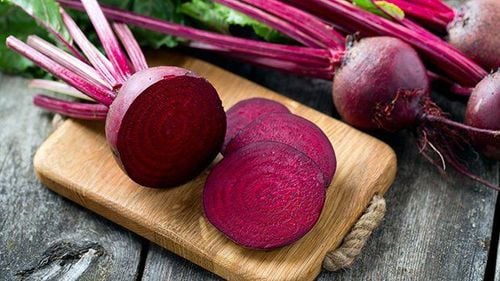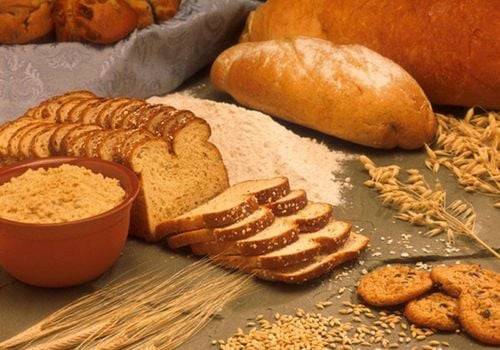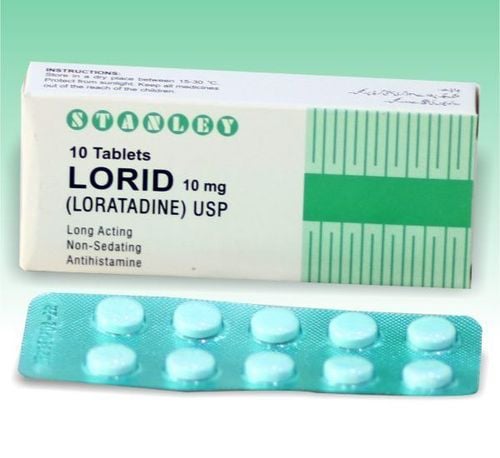This is an automatically translated article.
Using seasonal foods will help you limit pesticide residues, buy fresh food and save a part of the economy. Because some fruits and vegetables grow better in the summer or spring and are more expensive in the winter when they are not easily grown. To better understand the use of seasonal foods, please follow the detailed information in the following article.
1. Spring food 1.1. Strawberries The most delicious, red berries are usually harvested in April. Strawberries are packed with vitamin C, antioxidants, fiber and potassium. Even if you have kept them in the refrigerator, you should still enjoy strawberries early because this fruit often does not keep for long and easily rots. Choose fruit that is small or medium in size, with fresh green stalks still on it. Cut off the leaves and wash this juicy red strawberry before eating.
1.2. Spinach The fiber, magnesium and vitamin C found in spinach are good for you. Add raw spinach to salads or cook it as a side dish. Try cooking vegetables with some olive oil and garlic. Wrap spinach in damp paper towels, then store in a plastic bag in the refrigerator, this will keep them fresh for several days.
1.3. Rhubarb vegetables Growing rhubarb is a sign that winter is over and spring has arrived. In Western countries, rhubarb is a commonly used ingredient for baking. You can add rhubarb to salads or make sauces. To choose good vegetables, you should buy vegetables with dark red stems and strong stems. However, rhubarb leaves should not be used because they contain high levels of oxalic acid, which can cause poisoning. Keeping vegetables in the refrigerator helps to keep them fresh for several days.
1.4. Spring onions are the season when scallions begin to bloom and in summer they continue to grow. Fresh scallions, which can be used as a garnish, substituted for other onions in salads or mixed into cooked dishes such as fried eggs.

Dâu tây là thực phẩm theo mùa
2. Summer food 2.1. Watermelon There is nothing more refreshing than eating a cool piece of watermelon on a hot afternoon. Watermelon contains a lot of water, drinking watermelon juice helps the body to stay hydrated. Besides, watermelon has lycopene and other nutrients that help you recover after cycling, jogging...
2.2. Beets Beets are a deep cherry red, but can also be yellow or white. Both the tubers and leaves can be used cooked or eaten raw. Accordingly, you should store beets in the refrigerator, wash the roots thoroughly before cooking because the roots grow deep in the soil. The red color of beets can cause stains on your shirt, so always wear an apron when preparing it and keep a hand towel handy.
2.3. Figs Ripe figs can be eaten with the skin as well as the insides, try eating them with some cheese or plain yogurt. Eating according to the season helps you enjoy the delicious taste of figs in the freshest way. They are a good source of fiber and potassium. Store figs in a bag in the freezer of the refrigerator and use them within a few days.
2.4. Zucchini Zucchini can be prepared in many different ways. You can stir-fry or add it to stews, or even make zucchini "noodles". The growing season of squash lasts from late spring to early fall. Zucchini is low in calories, fat-free and rich in vitamin C.
3. Fall food 3.1. Apples You can buy apples year-round at the grocery store, but there's nothing like a crunchy locally grown apple, picked and sold in season. Apples have no fat, no cholesterol and are also high in fiber. Apple skins contain many nutrients, so you should not peel them away.
3.2. Pumpkins Pumpkin skins are dark green, but they can also be orange or yellow; The shell is usually dull, not shiny. Therefore, you should avoid buying any fruit that is soft or cracked. Pumpkin can be stored for a long time, up to 3 months if stored in a cool, dry place. Pumpkin is a rich source of vitamin C and carotenoids – the building blocks of vitamin A and good for your eyes.
3.3. Small Cabbages (Brussels Sprouts) Small cabbages are delicious when you prepare them by baking in the oven or sautéing with onions. Small cabbage contains a lot of fiber, good for digestion and blood sugar. Cabbage is one of those "cruciferous" vegetables (like kale, broccoli, and cauliflower) that have antioxidants that may reduce your risk of cancer.

Củ dền là thực phẩm theo mùa
3.4. Cauliflower Cauliflower is usually white, yellow, green and purple. Its different colors are due to the fact that they contain different antioxidants that help protect body cells from damage. Farmers usually harvest in the fall, although the growing season varies depending on the region. Some places, like India, even have a second growing season in late spring and early summer.
4. Winter food 4.1. Sweet potatoes Farmers start harvesting sweet potatoes in the fall, but the crop often extends into winter in many areas. You should look for sweet potatoes that are small or medium in size, with a smooth outer skin, no marks. Sweet potatoes can keep for 3 to 5 weeks if you store them in a cool, dark place. They are a good source of vitamins A, C and potassium.
4.2. Cabbage Cabbage is a good source of vitamins A and C, as well as folate, calcium, and fiber. Some people like to stew spinach with meat, depending on your preference you can use chicken instead of pork to reduce calories and fat. Another way to prepare it is that you can saute the collard greens with olive oil, onions, and garlic. Choose vegetables with dark leaves and not yellow, store them in the refrigerator and use within about 5 days.
4.3. Citrus fruits Some typical types that we can name are: oranges, tangerines, grapefruits. The best time to harvest these fruits is during the winter months. You can eat the whole fruit, squeeze the juice to drink or add it to sauces and salads. Citrus fruits are rich in vitamin C, which is especially delicious when fresh and eaten in season.
Seasonal food is easy to grow and develop, so it will limit the amount of plant protection drugs, ensure freshness and cheaper price. Therefore, eating according to the season can bring many benefits. Hope the information in the above article helps you understand and use food in a safe and healthy way.
Follow Vinmec International General Hospital website to get more health, nutrition and beauty information to protect the health of yourself and your loved ones in your family.
Please dial HOTLINE for more information or register for an appointment HERE. Download MyVinmec app to make appointments faster and to manage your bookings easily.













